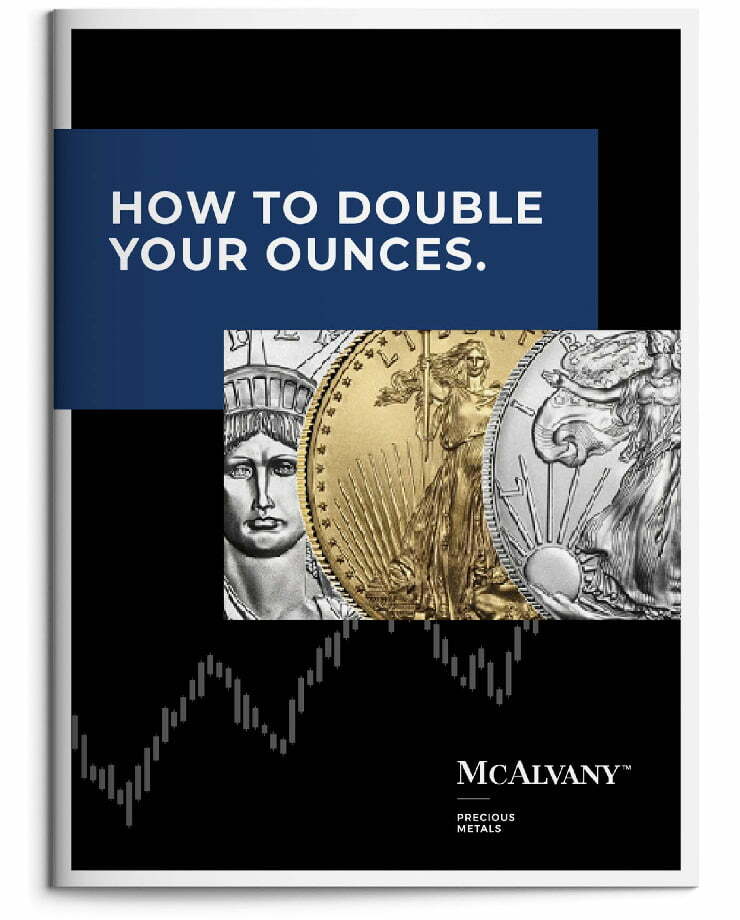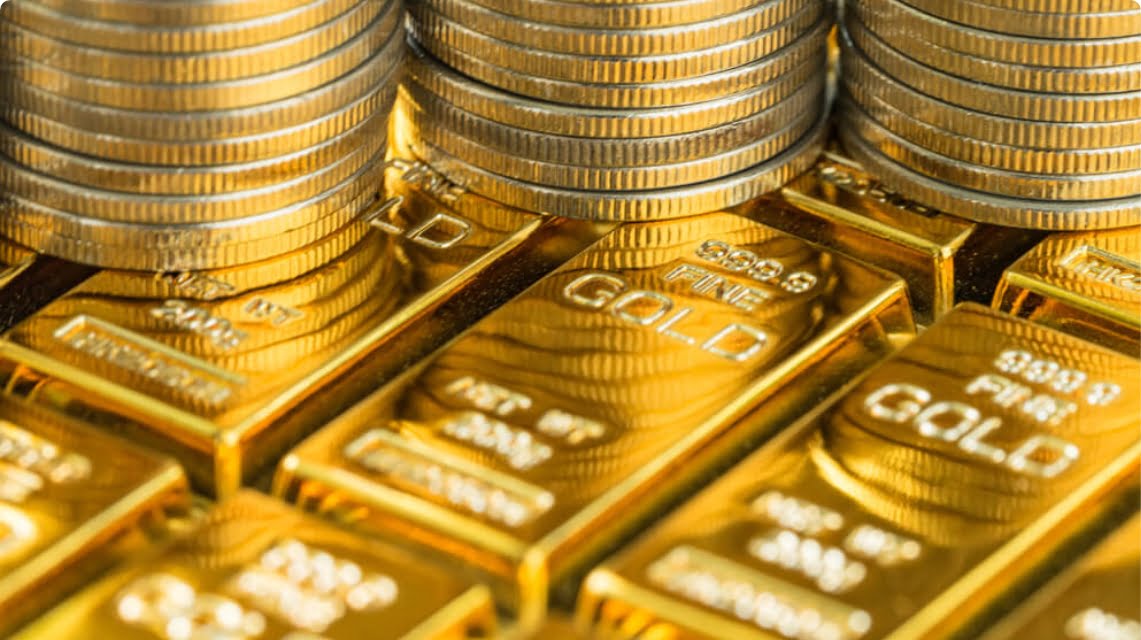On Thursday this week, MWM had its first-quarter client call. The narrative below will be a highlight reel of this author’s comments, given their high level of relevancy.
The dramatic ascent of the gold price since late 2015 is merely the logical manifestation of one very simple reality—something is very wrong with the smooth functioning of the post-1971 U.S. dollar-based global petrodollar system. That petrodollar system is a credit- and debt-based system, and the debt has simply gotten too big.
The result of that simple reality is that, in MWM’s view, we are now witnessing a restructuring of the post-1971 U.S. dollar-centric global system. That restructuring essentially amounts to a silent global monetary regime change and a silent re-monetization of gold.
Now, major system changes—silent or otherwise—don’t usually happen overnight. Sure enough, you can trace this monetary reordering back 16 years to when global central banks became net buyers of gold and began preparing for the eventual change we are now witnessing.
In the post-1971 dollar-based system, long-term U.S. Treasuries (not to be confused with short-term T-bills) have served as the primary global reserve asset. They have essentially been the center of our global system for over 50 years. That, however, is now beginning to change. HAI believes gold is the primary beneficiary.
To briefly review: In very simplified terms, under the petrodollar system, oil and commodities transact globally in U.S. dollars. Commodity-producing nations sell their surplus production, lets say oil, to other nations in need of oil, in exchange for dollars. Those dollars are then primarily saved, or “reserved,” in the form of long-term U.S. Treasuries, which are supposed to hold their value and pay a yield above the rate of inflation.
This petrodollar system—or global “dollar recycling” system—typically translates to intense global demand for dollars as well as the long-term U.S. Treasuries that are held as the primary global reserve asset. At least, that was the system. That system is now beginning to break down.
After fully abandoning a gold standard system, the world continued to use the dollar as its reserve currency on the basis of an assurance. That assurance was that the U.S. would run a strong dollar policy and maintain both monetary and fiscal policy discipline to ensure that long-term U.S. Treasuries would be as good as gold. Specifically (in the context of the petrodollar system), long-term U.S. Treasuries would be as good as gold in exchange for valuable oil, commodities, and other dollar-denominated goods.
But the U.S. has long since reneged on that promise, and Treasuries are consequently failing as a store of value, as a safe haven, and as a functional global reserve asset.
As a result, the petrodollar system is increasingly breaking down because long-term U.S. Treasuries are breaking down under the combined weight of inflation, a trapped Federal Reserve, $37 trillion in U.S. debt, annual deficits of nearly $2 trillion, and a skyrocketing interest expense that now exceeds defense spending, is the government’s fastest growing line item, and represents a vicious debt-spiral threat in the making.
In short, Treasuries are no longer as good as gold in exchange for oil and valuable commodities. In fact, to illustrate the problem, consider that since the turn of the century a commodity producer that sold oil for long-term U.S. Treasuries has lost almost 85% of the value of their oil profits relative to subsequent oil price changes. By contrast, if they sold oil for gold (the old global reserve asset standard), their oil profits have increased almost 96% over the subsequently increased value of the oil that was sold. The key takeaway is that, at present, given the failure of long-term U.S. Treasuries as a functional store of value and reserve asset, and without an alternative savings or “reserve” vehicle, oil producers would be better off keeping their valuable oil in the ground.
Make no mistake, the failure of long-term U.S. Treasuries as an effective store of value is a huge problem for the petrodollar system, and sovereign nations are certainly paying increasing attention. Instead of recycling oil and commodity profits back into U.S. dollars (in the form of U.S. Treasuries), growing numbers of global central banks are recycling national oil and commodity trading profits back into gold. Gold is increasingly replacing U.S. Treasuries as the global reserve asset of choice.
This massive problem with long-term U.S. Treasuries isn’t going away any time soon. In fact, as former Goldman Sachs’ Global Head of Commodity Research Jeff Currie said in 2024, “you’re unlikely to see that dollar recycling playing out probably ever again.” And as Currie explained, dollar recycling is transitioning to gold recycling as a growing number of global oil and commodity trades are now net settled in gold.
The data bears that out. Indeed, we’ve seen a meaningful acceleration in global central bank gold buying. After turning net gold buyers in 2010 for the first time in decades, central banks increased their gold reserves at an average rate of 473 tonnes annually between 2010-2021. Since 2022, with the accelerating deterioration in the quality of long-term U.S. Treasuries and then the weaponization of the dollar in 2022, global central banks more than doubled the pace of their gold purchases. They have devoured gold at a record rate of over 1,000 tonnes per year for three straight years. According to the consultancy company Metals Focus, global central banks are once again set to continue that 1,000+ tonnes pace of buying again this year. Most importantly, based on the World Gold Council’s annual Central Bank Gold Survey, it appears the voracious central bank buying trend will continue for the foreseeable future.
Of the 73 central banks that responded to the latest Central Bank Gold Survey, an overwhelming 95 percent said they believe central bank gold reserves will increase over the next year, and a record 43 percent of the respondents indicated that they expect their own gold reserves to expand. That was up from 29 percent in 2024. Tellingly, no survey respondent—not one—expected their gold reserves to decline.
A Bloomberg Intelligence survey annually asks global central bankers about expected changes in reserve holdings over the next five years. When asked about their five-year expectations for U.S. dollar (or Treasury) holdings in 2022, 42% of respondents expected dollar reserves to be lower. That number increased to 55% in 2023, further increased to 62% in 2024, and has now reached 73% as of 2025.
Between the World Gold Council and Bloomberg Intelligence surveys, the central bank preference for gold over dollars and Treasuries is clear and accelerating.
As for gold, the situation is completely reversed. Central bank respondents expecting gold reserves to be higher in five years have jumped from 46% in 2022 to 63% in 2023, to 69% in 2024, and are now up to 76% in 2025.
Furthermore, 2025 also saw the largest number of central banks to ever respond to the World Gold Council survey. As the World Gold Council put it, the increase in participation is “a powerful signal of engagement with gold amongst the central banking community.”
To be clear, so far this bull market in gold has been driven almost exclusively by this central bank buying. The problem is that U.S. Treasuries—and, by extension, the post-1971 dollar-based global system—are catalyzing the creation of a new global system in which gold plays a much more prominent role.
The central bank shift from dollar recycling to gold recycling, from Treasuries to gold as global reserve asset, is indeed the origin story of our powerful ongoing gold bull market. The central bank story has been bull market-maker number one—and it’s not going anywhere.
But HAI believes we are right on the cusp of a new acceleration phase in the gold bull—the Western investor participation phase that will layer on top of the aggressive central bank buying. This represents bull market-maker number two—and it appears to just be getting going right now.
Over the last several years, HAI has highlighted and chronicled Western investor disinterest in gold, but that now appears to be changing.
In HAI‘s view, a very important Western investor awareness of the severity of the U.S. fiscal problem is now growing. Increasingly, we are seeing many prominent Western investors anticipating a classic inflate-the-debt-away playbook from Western policymakers as they attempt to deal with the reality of our fiscal crisis.
That policy playbook likely involves higher inflation along with efforts toward yield curve suppression. If so, that’s very likely to drive two things: 1) substantial further outflows from long-term U.S. debt holdings, and 2) an acceleration phase in the ongoing precious metals bull market as previously uninterested Western investors increasingly pivot toward the new inflationary policy playbook—and, by extension, HAI believes, toward gold and related assets.
Year-to-date in 2025, the HUI gold mining ETF has outperformed physical gold dramatically (the HUI is up over 55% while physical gold is lagging with a gain of over 28%). Now even silver is edging out gold’s performance so far in the second quarter. Central banks buy physical gold, not the gold miners or physical silver, so, in MWM’s view, the 2025 trend towards outperformance in the mining stocks and silver is a very strong indicator of the increased participation of the previously missing Western investor in this new gold rush.
We think that early indication of initial Western investor participation, however, is just the beginning of a much larger Western capital inflow into precious metals soon to come. Note that in just the last two weeks (as detailed in last week’s HAI), the Western narrative has begun to swing wildly toward the precious metals sector.
In just the last several weeks, we’ve seen JPMorgan CEO Jamie Dimon, hedge fund legend Paul Tudor Jones, DoubleLine Capital’s “bond king” Jeffrey Gundlach, and former PIMCO chief Mohamed El-Erian all saying eerily similar things to HAI on the severity of the U.S. debt problem, the failure of long-term U.S. Treasuries as a flight to quality asset, and the emergence of gold as the new (albeit old) flight to quality asset.
This week we can add Jeff Currie, the previously mentioned former Global Head of Commodity Research at Goldman Sachs. He’s the latest prominent Western institutional name to reiterate the bullish message on gold. Thursday on MacroVoices he said:
“The petrodollar system that has been there for 75 years, It’s now gone… We’ve got to come up with a new solution to replace it… Gold was already replacing all of this, going back to the Russian invasion of Ukraine when the U.S. seized the Russian Central Bank assets because that became very clear to everyone that those U.S. Treasuries and those U.S. denominated assets were no longer sacred.
“And if you were an EM [emerging market] central bank at that point in time, you started moving out of US Treasuries, out of US dollars, and into gold. And that’s essentially what environment we’ve been in since 2022.
“And you know, the fact of the matter is, I don’t see where the end is for gold in terms of the upside. It doesn’t have a natural price elasticity demand—yeah, that exists in the jewelry market. But for monetary ownership of gold, there is not that price elasticity, and we’re seeing that dynamic play out…as we, as the U.S., retreat and you lose that balancing system of US Treasuries and energy and trade [the petrodollar system]…I think gold is going to be the biggest benefactor. I mean, you’ve already crossed $3,500, I don’t know, $4,000, $5,000? I don’t know where we’re going to go on gold. All I know is, I want to be long and hang on for the ride…”
In HAI‘s view: well said, Mr. Currie. Be long and hang on for the ride.
Weekly performance: The S&P 500 was off by 0.15%. Gold was down 1.89%, silver was off 0.91%, platinum was up 4.15%, and palladium was up 1.71%. The HUI gold miners index was off 2.40%. The IFRA iShares US Infrastructure ETF was down 0.80%. Energy commodities were volatile and higher on the week. WTI crude oil gained 1.45%, while natural gas surged 8.74%. The CRB Commodity Index was up 0.85%. Copper was up 1.81%. The Dow Jones US Specialty Real Estate Investment Trust Index was off 0.27%. The Vanguard Utilities ETF was down 0.74%. The dollar index gained 0.53% to close the week at 98.71. The yield on the 10-yr U.S. Treasury was off 2 bps to close at 4.38%.
Have a wonderful weekend!
Best Regards,
Morgan Lewis
Investment Strategist & Co-Portfolio Manager
MWM LLC















